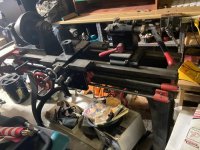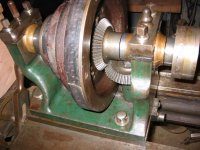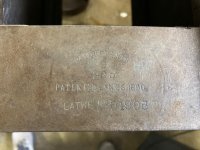Hello,
I recently purchases an antique lathe that I am having trouble identifying. I was wondering if anyone on the forum here has some experience with that? I've included a photo as a start. It has a 36" throat, its belt driven and I'd be happy to get other details
Thanks!
JB
I recently purchases an antique lathe that I am having trouble identifying. I was wondering if anyone on the forum here has some experience with that? I've included a photo as a start. It has a 36" throat, its belt driven and I'd be happy to get other details
Thanks!
JB












